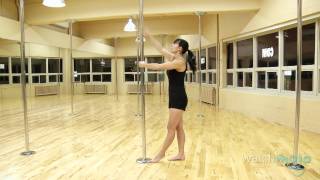Dancing poles are not as simple as they seem. This is not a pole placed on a stand. It is a complex metal structure that allows dancers to perform elements of different dynamics and complexity.
Professional Dancing poles – Polished Reinforced Steel Tubes
Dancing poles are home and professional. The professional is constantly under a heavy load. Therefore, special attention is paid to their quality and safety during production and installation.
The dancing pole itself is a steel pipe with a diameter of 40-50 mm with a mirror polish. The better it is polished, the better the grip of the hand with it will be. For acrobatic elements and dynamic rotations, this is very important. Also, the coating may be chrome-plated, but from intense training, it will wear out over time. With a mirror surface, such problems will not arise.
Dancing poles also vary in height. The average is 3.5 meters. At this height, additional reinforcement is not required.
However, now in major competitions, the height of the dancing pole is 4 meters, and for a safe dance, it is necessary to use the enhanced version. To do this, a smaller diameter pipe is inserted inside the main pipe, and the distance between them is foamed. Such dancing poles are heavier and therefore more expensive.
You can easily check whether the reinforced or unreinforced dancing pole is in front of you. To do this, you need to attach a magnet to it, and if it does not hold, then in front of you is an ordinary steel dancing pole, if it holds, then it is reinforced with a pipe of another metal.
Ask why the dancing pole is hollow? Because otherwise it would be unbearable and would require completely different costs. Physical and financial. Now the dancing pole is made from ordinary industrial pipes used, for example, for the manufacture of handrails. And its average price is from 8 to 24 thousand rubles. You can choose your option in the best pole dancing pole for home review.
Dancing poles are also removable and non-removable.
From a security point of view, there is no difference, only in the installation method. The fixed dancing pole is bolted to the floor and ceiling, while the removable dancing pole stands at a stand. But to install a professional, you must have a solid ceiling (concrete coating or steel beam).
The installation of a professional dancing pole is done by specialists. It is necessary to calculate the load, and choose a reliable mount, calculate the distance between the dancing poles so that people do not kick against each other or against the walls during rotations.
Even the height of the dancing pole should be considered when attaching it. Since the higher the dancing pole, the more it loosens during dynamic rotations. And this does not guarantee security.
Therefore, dancing poles of 4.5 and 5 meters can only be made to order.
Distinguish between dynamic and static dancing poles. That is, rotating and non-rotating.
This characteristic is important for quality training. For studios, they use dual modes, since with serious classes, the dancer works on both static and dynamic elements. Such a dancing pole is switched using a key. You can practice on a static dancing pole, and then pull out the key and continue training in dynamics.
During the competition, there are two types on the stage, and the participants must demonstrate their skills on both. On a dynamic dancing pole show control over rotation, and on static power elements and rotation on a static.
Home dancing poles can be taken with you to the cottage.
Technical requirements for home dancing poles are not as stringent as for professional dancing poles because the ceiling height in a standard apartment does not exceed 3.5 meters.
Home dancing poles are dynamic and static, removable, and non-removable. Most of them, of course, are removable. The main difference between home dancing poles is that they consist of several parts (two main parts and different extensions for versatility).












